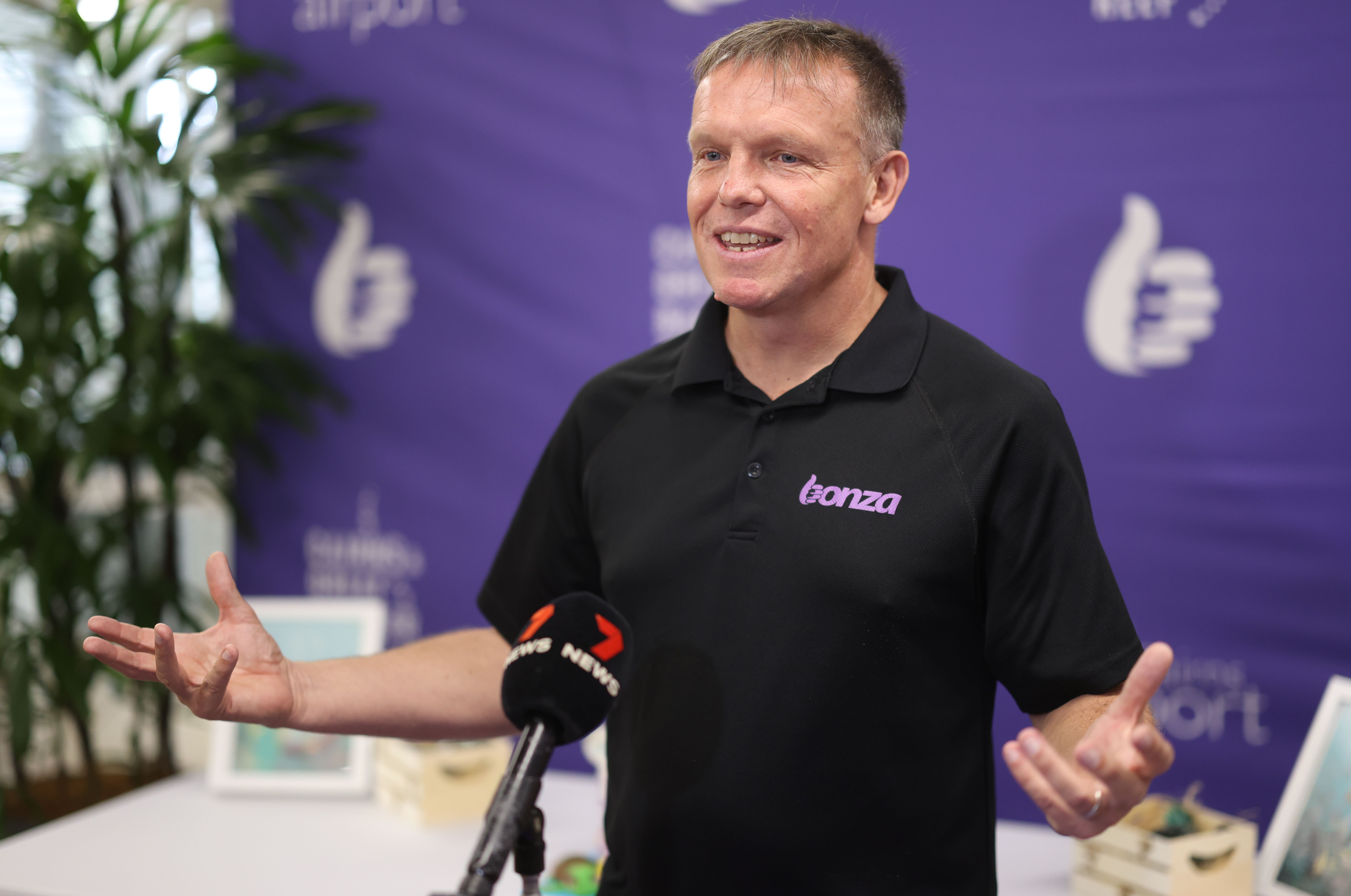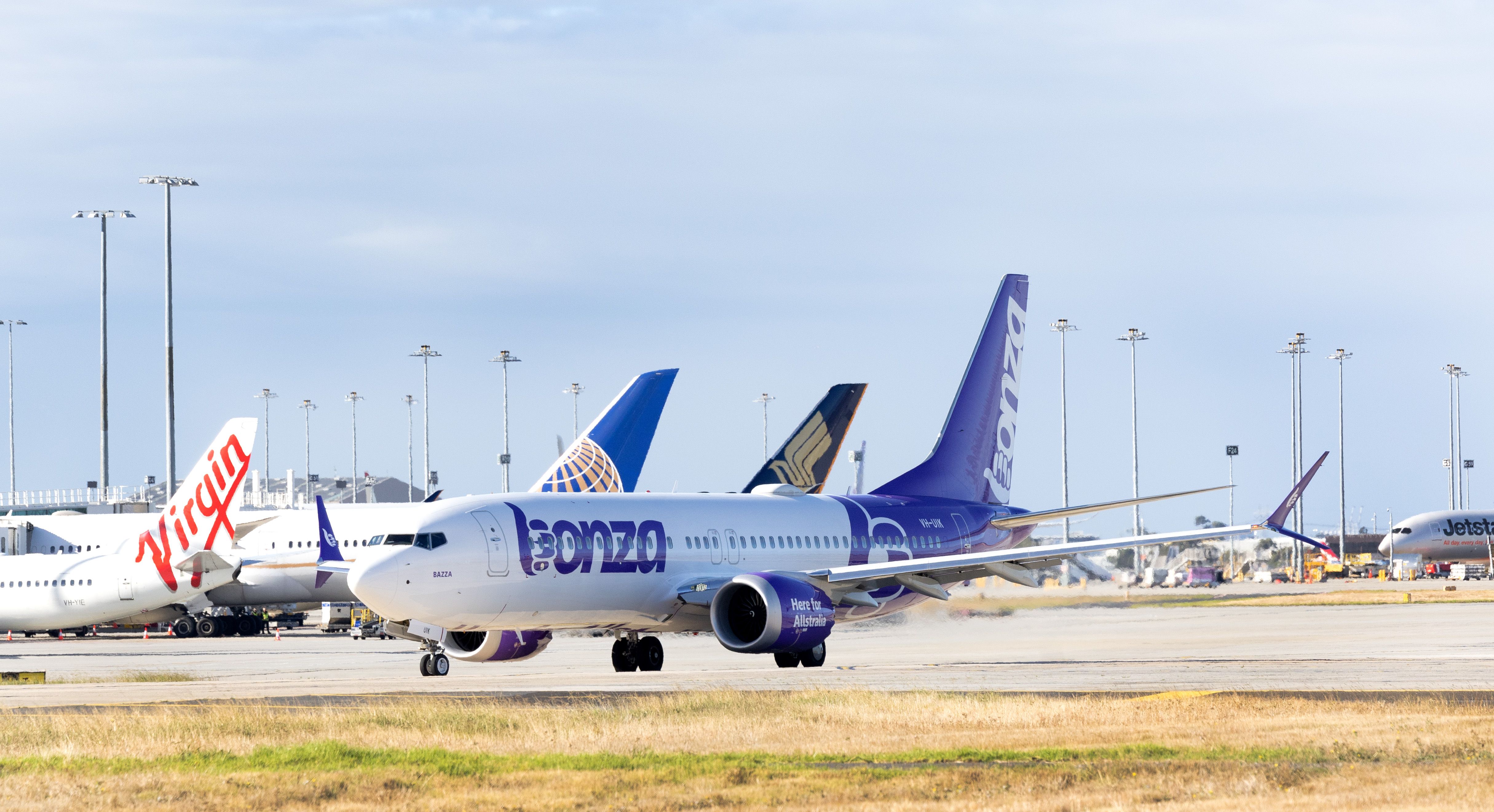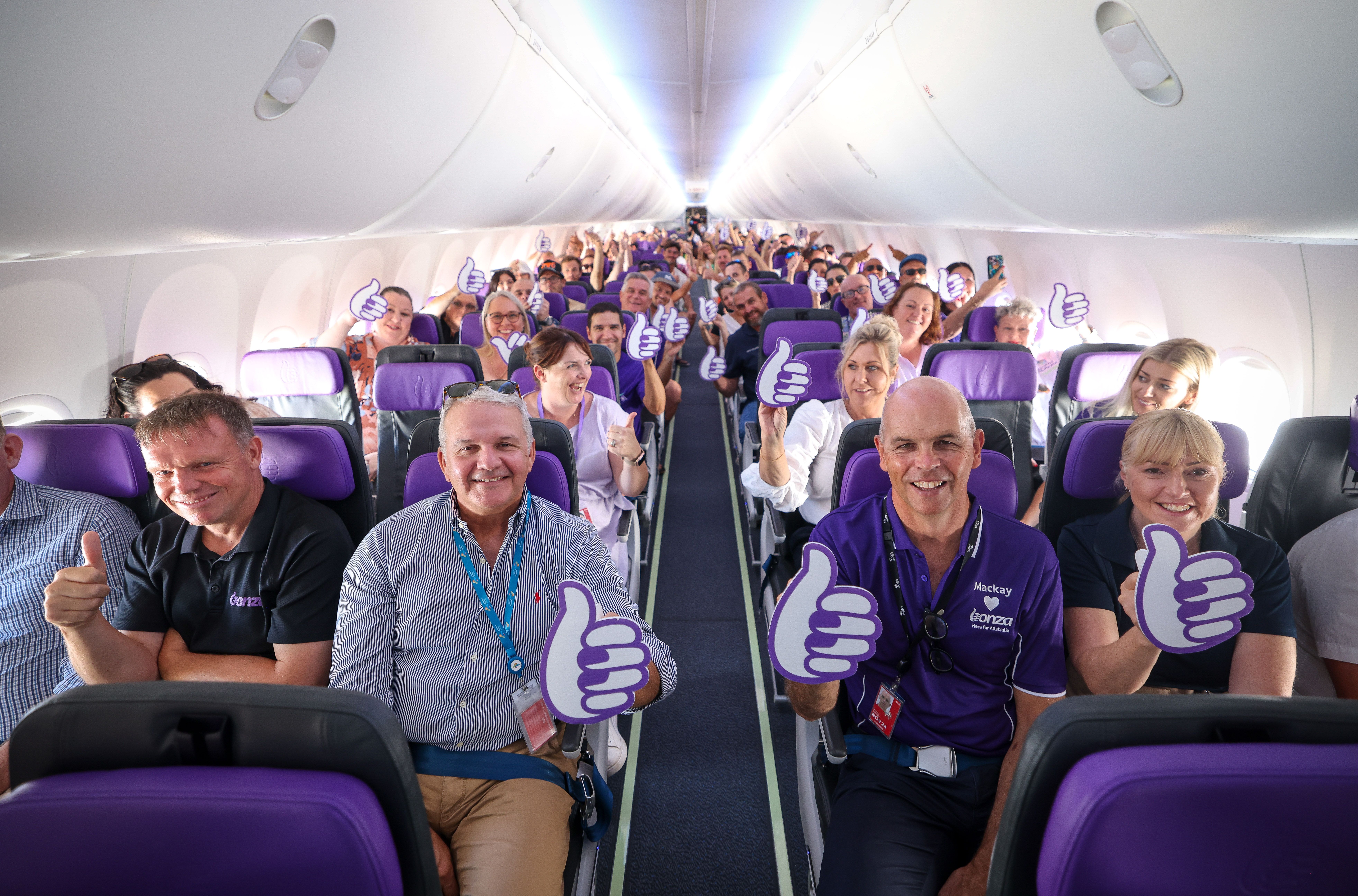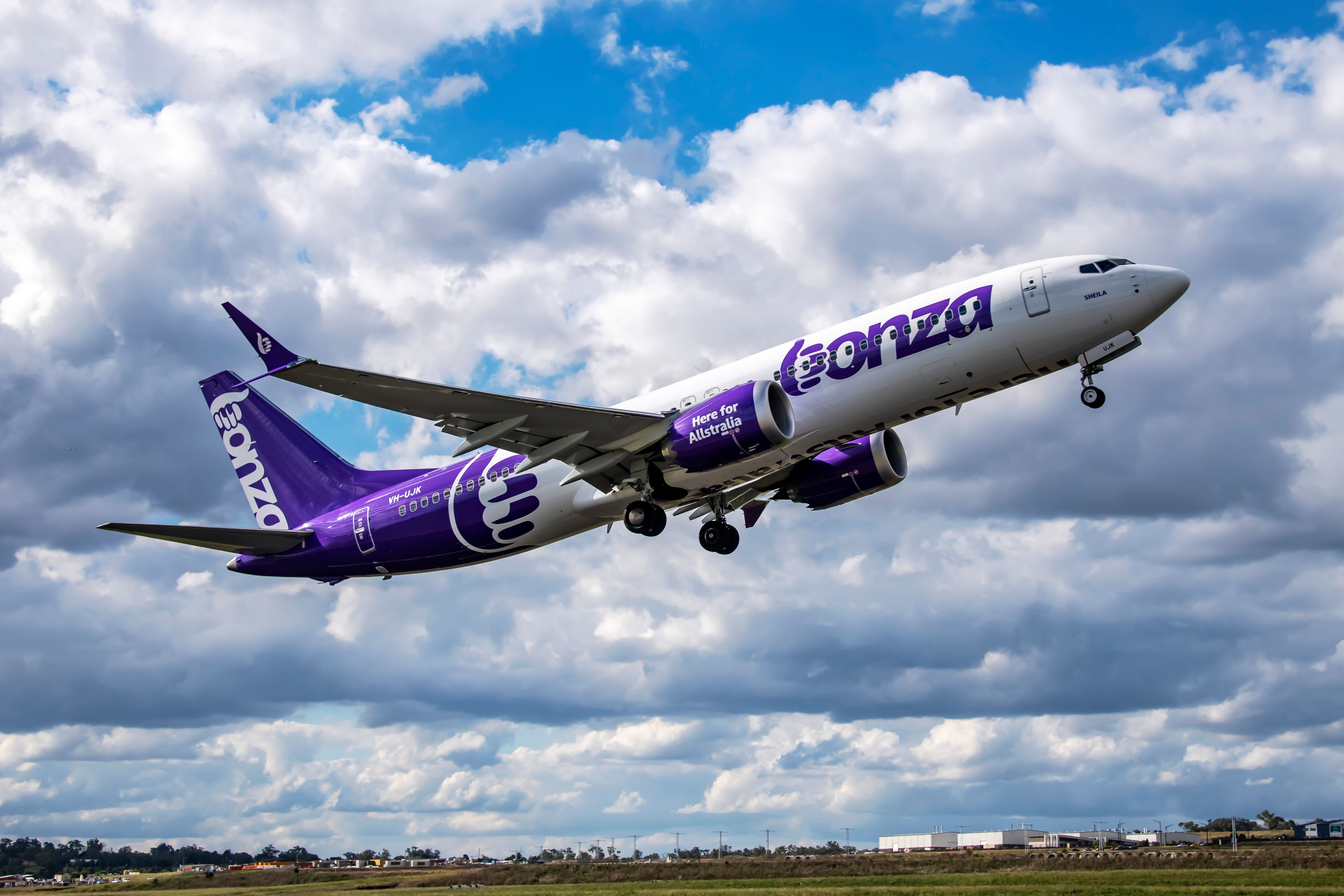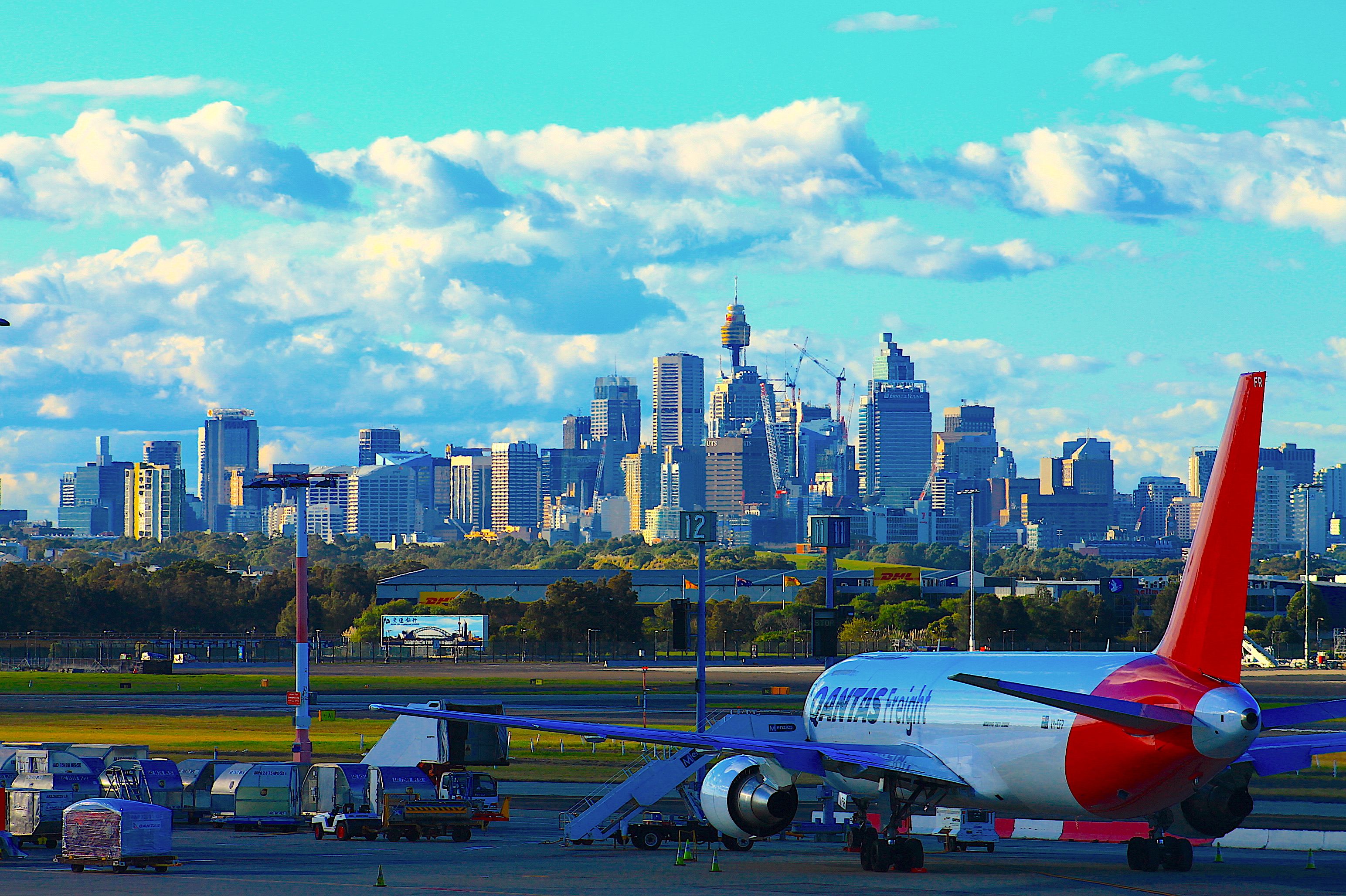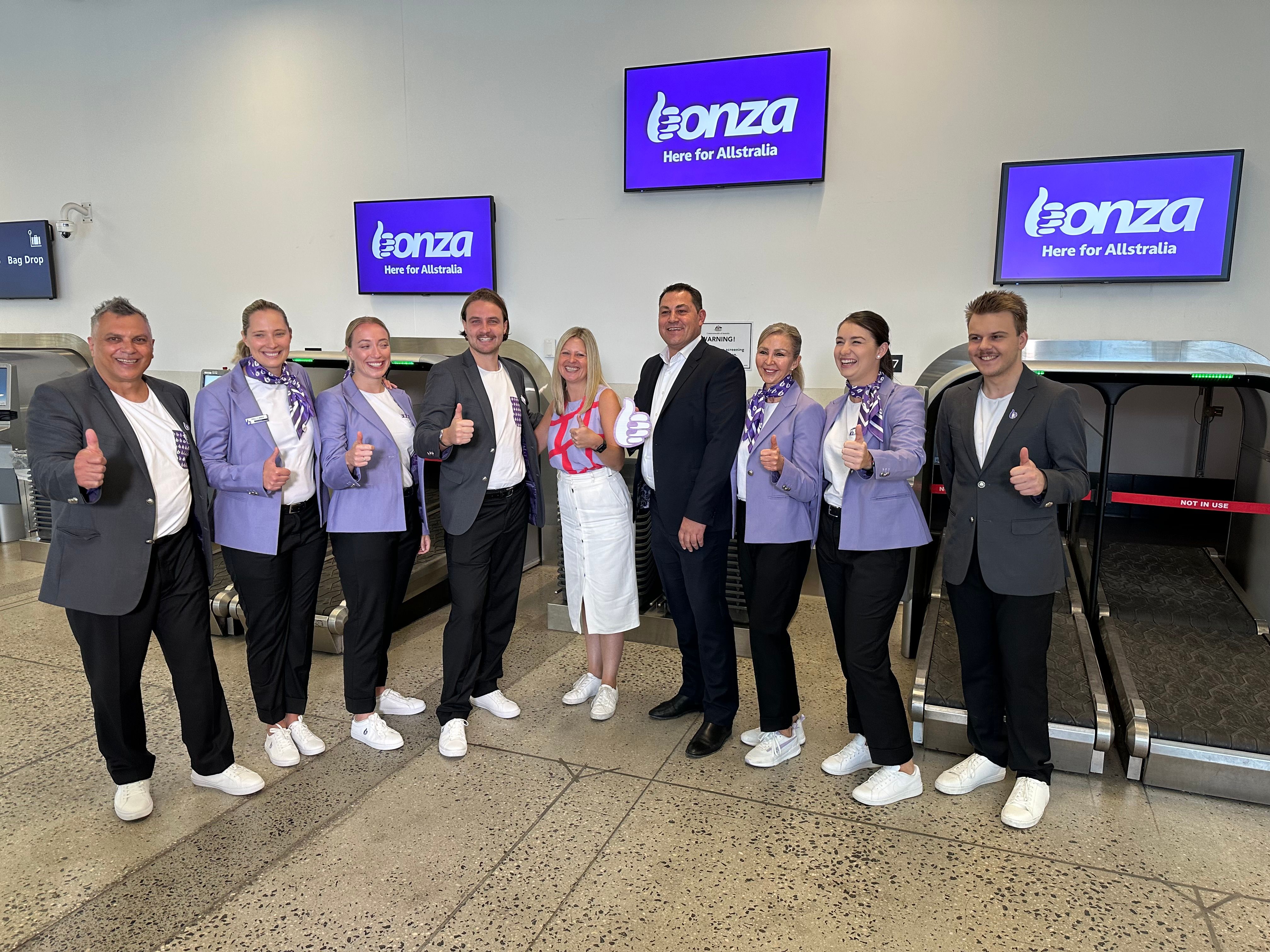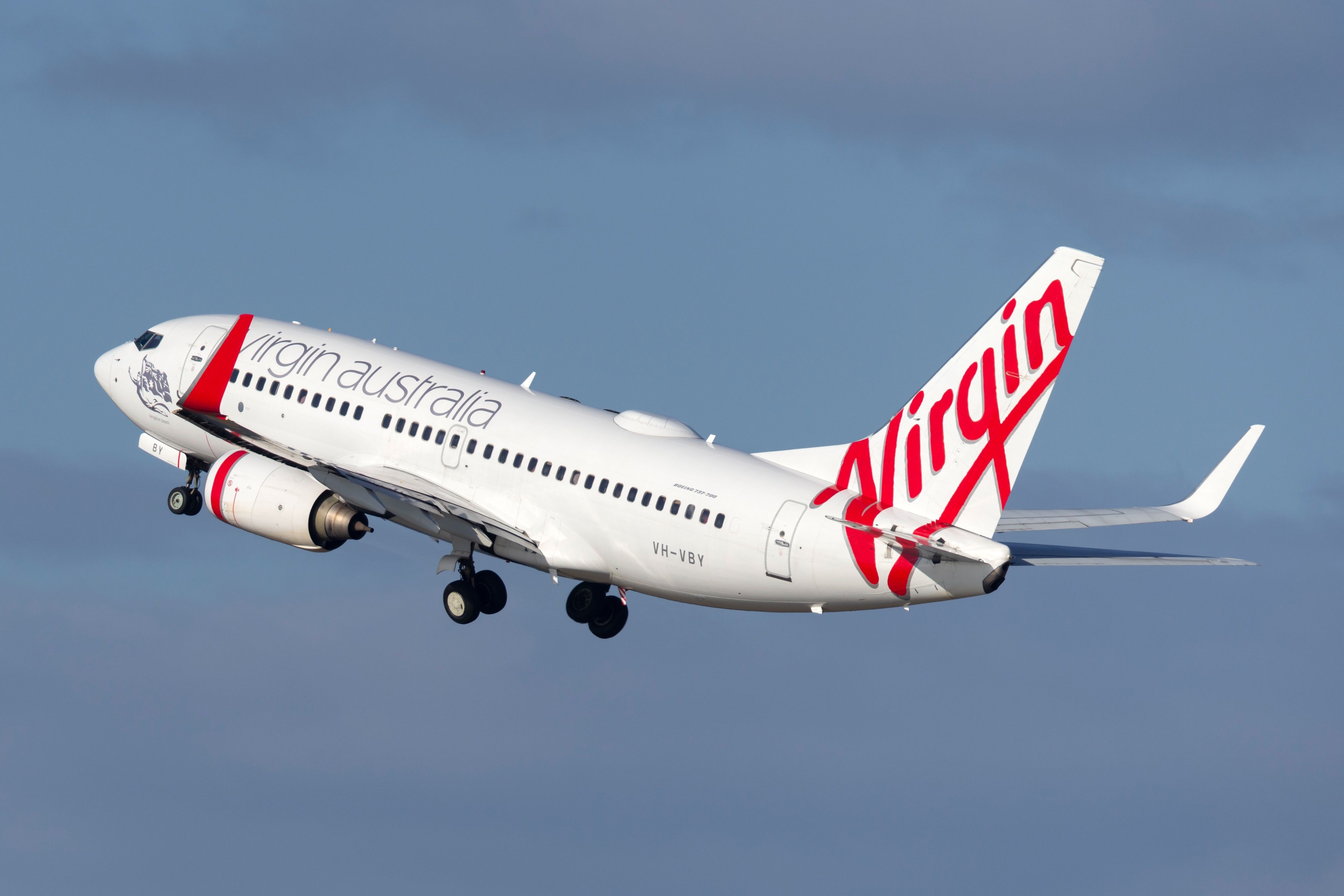Now that all the launch cakes are gone Australia’s newest airline, Bonza, is living on a diet of day-to-day operations, keeping its fleet flying on 27 routes to 17 destinations. Whether it is missing the parties or just wants to connect more Australians Bonza is already looking to expand but slot-hoarding at the country’s largest airport is keeping those plans in the hangar.
Photo: Bonza
When Bonza launched its first flight from the Sunshine Coast Airport on January 31st, CEO Tim Jordan fronted a press conference where he was quizzed (including by Simple Flying) about why Sydney was not on the network map. Back then, he answered politely with a “never say never” response that indicated it was on the radar a little down the track.
Bonza wants to start connecting Sydneysiders
With the initial rollout complete the strategists at Bonza are looking for where to go next, and Sydney is at the top of the list, if only they could get somewhere to park their shiny new Boeing 737 MAX 8s. In an interview with Simple Flying last week Jordan told us:
“We can provide new service on unserviced markets or low-cost service on underserved markets to about 20 destinations, to and from Sydney, and 90% of those do not have low cost fares on them at the moment because it suits the incumbents to not have low-cost fares on those particular markets.”
Photo: Bonza
Bonza’s home base is at the Sunshine Coast Airport (MCY), and it now has a second base at Melbourne International Airport (MEL), where it houses two 737-8s and operational crews. On the other side of the city, it operates flights between Melbourne Avalon Airport (AVV) to the Sunshine Coast. Bonza’s model of point-to-point destinations is working both in regional ports and from a large capital city airport, which gives Jordan the confidence to say it will work from Sydney.
“The key message is really about what we’ve delivered in Melbourne in terms of new routes and destinations. We can do exactly the same or more to and from Sydney as well. And as we are demonstrating into and out of Melbourne there’s a customer base that would dearly love to fly it if it was more affordable to fly, and the same could be said into and out of Sydney as well.”
However much Bonza wants to launch services from Sydney Kingsford Smith Airport (SYD), it is just a pipe dream unless the low-cost carrier can secure a workable amount of functional slots at the airport. The airport wants Bonza to operate there, and Australia’s competition regulator believes it is vital to consumers that it can, but neither of those two has any say in granting the airline access to the airport.
Photo: Bonza
Jordan said that the airline needs two things in place to make Sydney routes happen: a commercial deal with Sydney Airport and slots to support the service. He added that “It’s pointless having one of those because you need both. I’m sure we could broker an arrangement with Sydney Airport but it’s absolutely pointless at this moment because we’ll have no slots.”
The airport’s perspective
Having reached this impasse, Simple Flying spoke with Sydney Airport about Bonza’s plight and was both gladdened and surprised by what they related. The first thing we learned was that Sydney Airport does not play a role in allocating slots at its airport, with that task handled by Airport Coordination Australia (ACA), which is a federal government agency.
Photo: Bonza
At the risk of oversimplifying a complicated process, gaining access to slots at Sydney Airport is a job for the Mission Impossible team. If an airline has access to a slot it will keep it in perpetuity so long as it meets some very basic criteria, including using it 80% of the time and using an aircraft of the proposed size.
This means that the major carriers at the airport, such as Qantas, Virgin Australia and Jetstar will keep their slots so long as they don’t cancel more than 20% of the flights scheduled for that slot. In April the official government figures show that for all airlines the national domestic cancelation rate was 3.9%.
However, on the lucrative Sydney-Melbourne route the cancelation rate was 9.5%, with Qantas canceling 10.5%, Jetstar 13.5% and Virgin Australia 7.6% of scheduled flights, compared to 3.6%, 8.1% and 2.9% respectively on all flights. The report shows that these three airlines had 2,017 of the scheduled SYD-MEL flights but operated only 1,813, meaning 204 or 10% of slots went begging.
Photo: Eigenblau | Shutterstock
This suggests slot-hoarding, which denies new entrants, like Bonza and Rex, access to slots, cuts the airport’s revenue and is a waste of the scarce resource that is Sydney Airport. The Sydney Airport spokesperson told Simple Flying:
“The current rules around slots make it hard to accommodate new entrants like Bonza at Sydney Airport.
“A rule that says it’s OK for airlines to cancel up to 20% of flights makes no sense and incentivises airlines to over-file for slots, leads to more cancellations and clearly isn’t in the best interests of the travelling public.”
The regulator wants changes to slot allocation
The airport is openly supportive of Bonza and the airline is confident it can successfully launch flights to around 20 destinations with affordable fares so where does the process go now? To find out, Simple Flying spoke to the Australian Competition & Consumer Commission (ACCC) which is also advocating for greater competition and is critical of how slots are distributed at Sydney Airport.
In its June Airline Competition in Australia report, the ACCC gave a scathing assessment of the airline industry and highlighted that both Bonza and Rex needed to succeed for there to be any meaningful competition in the domestic airline market.
In a submission to a government review of Sydney Airport Demand Management, the ACCC said the existing slot system impeded competition in two ways:
- Rules allowing airlines to retain slots in perpetuity exacerbate capacity constraints by limiting the opportunities for new or expanding airlines to acquire slots needed to launch new services and compete.
- Airlines are able to exploit the scheme by acquiring and hoarding slots for strategic reasons, such as to prevent competitors’ access to slots, resulting in inefficient slot use and further diminishing opportunities for increased competition.
Photo: Michael Doran | Simple Flying
The ACCC is proposing that the “use it or lose it” rules be strengthened to prevent airlines from hoarding slots and then selectively canceling flights. The commission also wants to change the preference given to incumbent airlines, particularly if they want to change the time of a slot ahead of new entrant allocation requests.
The ACCC is also mindful of the scarcity value of slots at Sydney Airport and how they are being used to entrench market power. It has suggested financial penalties be issued to airlines if a slot is not used, which it hopes would then see underused slots returned to the pool and available to new entrants.
The slot dealers
Having established that neither the airport, airline or regulator can issue a slot it’s time to look at who can, which is the above-mentioned ACA. The Australian Government is the body with the power, through the appropriate Minister, to change the slot allocation rules at Sydney Airport and it delegates the day-to-day administration of the slot scheme to ACA.
Interestingly the governing board of ACA consists of members representing Qantas Airways, Virgin Australia, the Regional Aviation Association of Australia and Sydney Airport. The Australian government is currently undertaking a review of Sydney Airport’s Demand Management which includes how slots are allocated and managed.
Photo: Ryan Fletcher I Shutterstock
Simple Flying has reached out to Airport Coordination Australia and asked questions about how slots are allocated, how can a new airline get slots and what is stopping it from happening for Bonza. We are yet to receive a response but any response we receive will be added to this article.
The end
This is a ridiculous situation where slots are not being used and a new carrier, which has successfully managed the largest rollout of routes in Australia, is being kept out of the nation’s largest gateway.
In the end, it’s the people of Sydney and the tourist towns in regional New South Wales who are the biggest losers. Handing out anything of such value in perpetuity with such a low performance bar is totally outdated and waiting for the government to change it is a worry in itself.
It is hard to see a way forward and with the new Western Sydney Airport still years away we can only wonder when Bonza will make “flying for the many and not the few” available in Sydney.
What do you think? Let us know in the comments.

